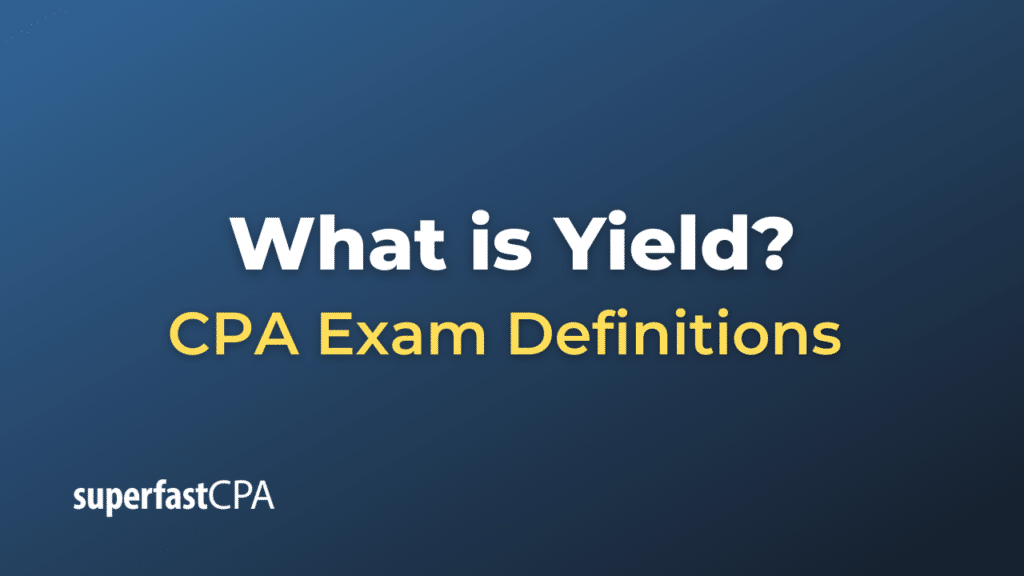Yield
In accounting and finance, “yield” refers to the income or returns generated from an investment over a specified period of time, usually expressed as a percentage. Yield can apply to various types of investments, such as bonds, stocks, or real estate. It is a measure used to evaluate the effectiveness of an investment relative to its cost or current market value.
The concept of yield is particularly important when analyzing fixed-income securities like bonds. For bonds, yield is often defined in a few different ways:
- Coupon Yield: This is the annual interest payment that a bondholder receives, expressed as a percentage of the bond’s face value.
- Current Yield: This is the annual interest payment divided by the bond’s current market price, which can be different from its face value.
- Yield to Maturity (YTM): This is a more comprehensive measure that calculates the total return an investor will receive if a long-term, interest-bearing investment, such as a bond, is held to maturity. It takes into account the bond’s current market price, par value, coupon interest rate, and the number of years remaining until maturity.
Yield is a key metric that investors use to assess the profitability and risk of different investment options. It allows for comparisons between the returns of various types of assets, making it easier for both individual and institutional investors to make informed decisions.
Example of Yield
Let’s consider two different examples, one for a bond investment and one for a stock investment, to better understand the concept of yield in accounting and finance.
Bond Investment Example
Suppose you purchase a 5-year bond with a face value of $1,000 and an annual coupon rate of 6%. This means the bond will pay you $60 in interest each year.
Calculating Coupon Yield:
Coupon Yield = (Annual Coupon Payment / Face Value) * 100
Coupon Yield = ($60 / $1,000) * 100
Coupon Yield = 0.06 * 100
Coupon Yield = 6%
If you bought the bond at its face value of $1,000, then the coupon yield and the current yield are both 6%.
Current Yield:
Now, let’s say the market price of the bond changes and is currently trading at $950. To find the current yield:
Current Yield = (Annual Coupon Payment / Current Market Price) * 100
Current Yield = ($60 / $950) * 100
Current Yield = 0.06316 * 100
Current Yield = 6.316%
With the bond trading at a market price of $950, the current yield is slightly above 6.316%.
Stock Investment Example
Let’s say you invest in shares of Company XYZ, which is currently trading at $50 per share. The company pays an annual dividend of $2.50 per share.
Calculating Dividend Yield:
Dividend Yield = (Annual Dividends per Share / Price per Share) * 100
Dividend Yield = ($2.50 / $50) * 100
Dividend Yield = 0.05 * 100
Dividend Yield = 5%
So, the stock has a dividend yield of 5%.
Importance of Yield
- Investor Decision-Making: Yield helps investors compare the returns on different types of investments. A higher yield may indicate a more profitable investment, although it usually comes with higher risk.
- Portfolio Management: Understanding yield can help you balance your investment portfolio. For example, if you’re looking for steady income, you might prefer bonds with higher yields. If you’re looking for growth and are willing to accept more risk, stocks with lower yields but higher potential for capital gains might be more attractive.
- Financial Planning: Yield is also crucial for financial planning, particularly for retirees who may depend on the income from bonds or dividend-paying stocks to cover living expenses.
By examining yield, you can make more informed decisions tailored to your investment goals and risk tolerance.













